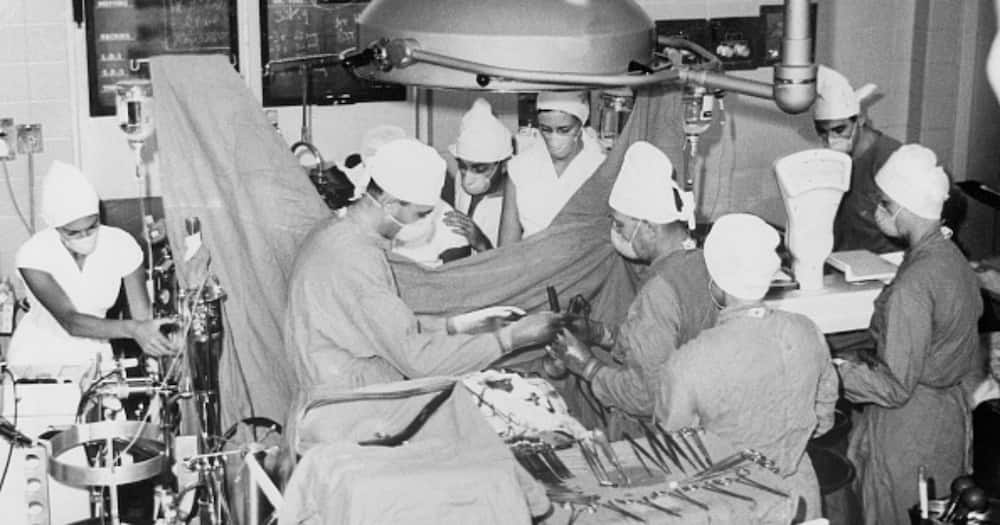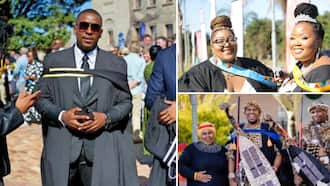Hamilton Naki Went From Gardener to Skilled Surgeon but Did Not Get the Recognition He Deserved
Hamilton Naki is a name not everyone is familiar with, even though he contributed to one of the most groundbreaking medical procedures in modern history - the first human-to-human heart transplant.
New feature: Check out news exactly for YOU ➡️ find “Recommended for you” block and enjoy!
On 3 December, 1967, Chris Barnard became famous around the world for performing the first human heart transplant in Cape Town. Barnard had credited Naki for his contribution leading up to the historic surgery, but to date, the self-taught surgeon’s exact role in the heart transplant procedure has been widely debated.

Source: Getty Images
On 26 June, on what would have been his 96th birthday, Briefly News took a look at the extraordinary life and career of Hamilton Naki.
Hamilton Naki was born into poverty and sought out a better life
Like millions of black people who were oppressed by the apartheid government, Hamilton Naki’s family was poor. He was born on 26 June, 1926, in Ngcingwane, a village in the Eastern Cape province. Before 1994, people of colour did not receive quality education and Naki moved to Cape Town at the age of 14 to look for a job.

Read also
Cassper Nyovest, Anele Mdoda and Ntsiki Mazwai share touching reactions following the Enyobeni tavern tragedy
PAY ATTENTION: Follow Briefly News on Twitter and never miss the hottest topics! Find us at @brieflyza!
With only six years of primary school education, Naki managed to land a job as a gardener at the University of Cape Town. According to DW.com, Naki was tasked with tending to the varsity’s tennis courts.
By 1954, Naki was cleaning the cages of laboratory animals. Dr Robert Goetz, a cardiologist and research scientist, noticed Naki had a unique set of skills. Goetz started honing those skills and soon Naki went from caretaker to anaesthetising animals and assisting with surgeries.
Hamilton Naki and Christiaan Barnard start researching groundbreaking cardiac surgery procedures
After Goetz left the university, Naki joined Barnard as a laboratory assistant, the New York Times reported.
Barnard wanted to bring the knowledge he had about open-heart surgery, which he studied in the United States, to South Africa. At first, Naki would perform anaesthesia on animals for Barnard to operate on, but he soon became the principal surgical assistant of the laboratory.

Read also
Prophet Shepherd Bushiri and his wife announce plans to build "iconic smart city" in home country of Malawi
Barnard praised Naki on several occasions for his skills. The world-renowned surgeon said that Naki was “one of the great researchers of all time in the field of heart transplants,” the New York Times reported.
Barnard added that if it wasn’t for the limitations put on Naki because of the injustices against black people at the time, he would have become a great surgeon.
In 1968, Naki helped develop the heterotopic, also known as the “piggyback”, heart transplant technique. Two years later, Naki left Barnard’s team to return to the surgical laboratory, where he then started working with liver transplants.
Barnard once said that Naki was probably a better surgeon than he was, pointing out he could not do a liver transplant, but Naki could. According to Associated Press, Barnard was quoted saying:
“A liver transplant is much more difficult than a heart transplant… [doctors who work with Naki] tell me that Hamilton can do all the various aspects of liver transplantation, which I can't do. So technically, he is a better surgeon than I am."

Read also
Youth Day: 5 Inspiring stories of graduates who filled Mzansi with pride and reminded people of their power
Naki’s surgical abilities wowed many, especially since he had no formal medical qualifications. Not only did Naki make contributions that led to the first human heart transplant, but he also taught many students surgical techniques, with some reports claiming he trained thousands of people.
Was Hamilton Naki involved in the first heart transplant or not?
The exact role Hamilton Naki played in the first human-to-human heart transplant is still heavily debated until today.
The original stories state that Naki played an important role in the research leading up to Chris Barnard performing the pioneering cardiac procedure. However, because of the unfair and discriminatory laws of the apartheid government, Naki was not allowed near the operating table.
Prior to the liberation of the country by Nelson Mandela and the ANC, a black person would not have been able to perform any medical procedure on a white person.

Read also
South Africa's next leaders: 7 Young people under 30 who are members of Parliament, Naledi Chirwa and more
According to South African History Online, Naki reportedly told someone close to him that he heard about Barnard’s successful heart transplant on the radio afterwards.
However, the stories about Naki’s part in the heart transplant changed post-apartheid.
South African History Online reported Barnard and Naki himself allegedly hinted that he had been part of the historic procedure. The South African presidency also claimed on its website that Naki assisted Barnard as an anaesthetist.
Part of the article read:
“Almost exactly 35 years ago, when Prof Barnard performed the first heart transplant in Cape Town, thus bringing South Africa, the University of Cape Town, and the J.S. Marais Laboratory international attention, it was Naki, by then a principal surgical assistant at the laboratory, doing research into liver transplants, who served as his anaesthetist.”
After Naki died of a heart attack in 2005, several large news sites, including The Economist and the New York Times, reported he had been part of surgery directly.
The Economist wrote that Barnard had allegedly asked Groote Schuur Hospital if Naki could be part of the surgical team and was granted permission, but it had to be a secret because of apartheid laws.
Another theory was that not only was Naki part of the team, but he was the surgeon who harvested the late Denise Darvall’s heart, which was then transplanted into Louis Washkansky by Chris Barnard.
However, all the publications that claimed Naki was part of the surgery printed retractions later. The publications either reported that they mistakenly wrote about Naki’s involvement based on either his own accounts or using incorrect secondary sources.
The university and surgeons who were part of the procedure maintained that Naki did not actively participate in the surgery itself and that Darvall’s heart was removed by Christiaan Barnard’s brother, Marius, and Terry O'Donovan.
Hamilton Naki’s life after the groundbreaking heart transplant surgery
Hamilton Naki’s life was a testament of the injustices of the previous regime. Despite being surgically gifted, Naki lived in poverty. He was allegedly married and had five children: four sons and one daughter. He resided in a one-bedroom home with no running water or electricity, according to the New York Times.
After he retired, Naki was given a gardener’s pension of about R760 a month. Only in the years after apartheid ended was Naki’s contribution to medicine celebrated. In 2003, two years prior to his death, the University of Cape Town honoured Naki with an honorary Master's degree in medicine. Naki was also awarded the Bronze Order of Mapungubwe in 2002 by President Thabo Mbeki.
The award is regarded as one of the highest South African civil honours and is given to citizens for "excellence and exceptional achievement".
Hamilton Naki deserved more global recognition for his medical achievements
Despite having no formal educational training and hailing from a disadvantaged background, Hamilton Naki made substantial contributions to the field of medicine during his life. Whether he was at the operating table during the first heart transplant or part of the team who researched it, he deserved more recognition for the part he played.
New feature: check out news exactly for YOU ➡️ find "Recommended for you" block and enjoy!
Source: Briefly News



